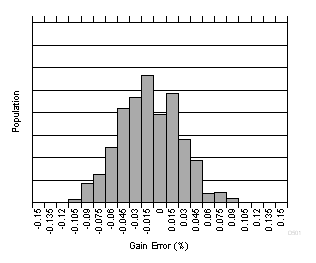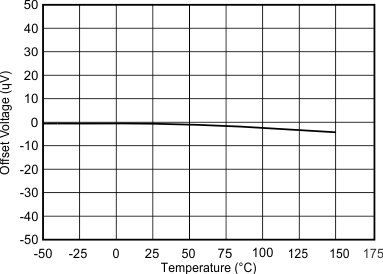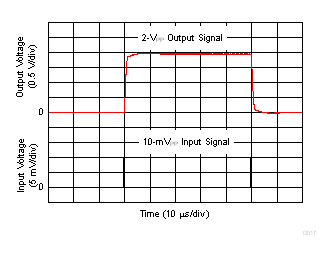SBOS662C July 2016 – December 2021 INA240
PRODUCTION DATA
- 1 Features
- 2 Applications
- 3 Description
- 4 Revision History
- 5 Device Comparison
- 6 Pin Configuration and Functions
- 7 Specifications
-
8 Detailed Description
- 8.1 Overview
- 8.2 Functional Block Diagram
- 8.3 Feature Description
- 8.4 Device Functional Modes
- 9 Application and Implementation
- 10Power Supply Recommendations
- 11Layout
- 12Device and Documentation Support
- 13Mechanical, Packaging, and Orderable Information
Package Options
Mechanical Data (Package|Pins)
Thermal pad, mechanical data (Package|Pins)
Orderable Information
7.6 Typical Characteristics
at TA = 25°C, VS = 5 V, VCM = 12 V, and VREF = VS / 2 (unless otherwise noted)

| All gains |

| All gains |

| INA240A1 |

| INA240A3 | ||
 Figure 7-9 Gain Error vs Temperature
Figure 7-9 Gain Error vs Temperature Figure 7-11 Power-Supply Rejection Ratio vs Frequency
Figure 7-11 Power-Supply Rejection Ratio vs Frequency

| VS = 0 V |
 Figure 7-17 Quiescent Current vs Temperature
Figure 7-17 Quiescent Current vs Temperature
| VS = ±2.5 V | VCM = 0 V | VDIF = 0 V |
| VREF1 = VREF2 = 0 V | Input referred |

| Rising edge |

| VREF1 = VREF2 = 0 V |



| INA240A2 |

| INA240A4 |

| VCM = 0 V | VDIF = 10-mVPP sine | |
 Figure 7-12 Common-Mode Rejection Ratio vs Frequency
Figure 7-12 Common-Mode Rejection Ratio vs Frequency
| VS = 5 V |

 Figure 7-18 Input-Referred Voltage Noise vs Frequency
Figure 7-18 Input-Referred Voltage Noise vs Frequency
| VREF1 = VREF2 = 0 V | 10-mVPP input step | |

| Falling edge |